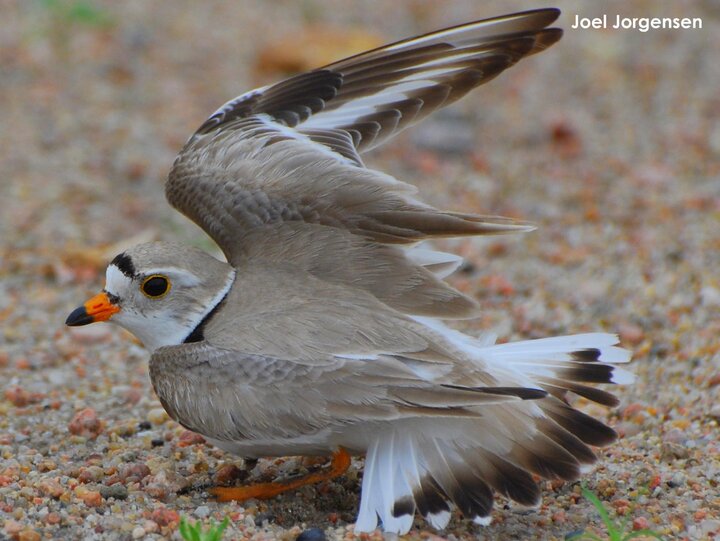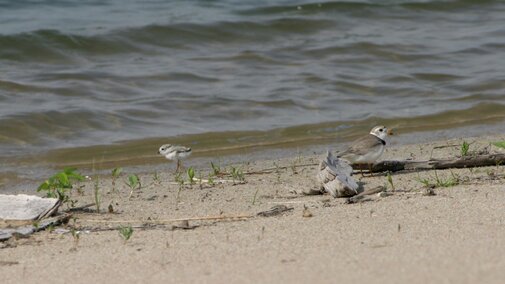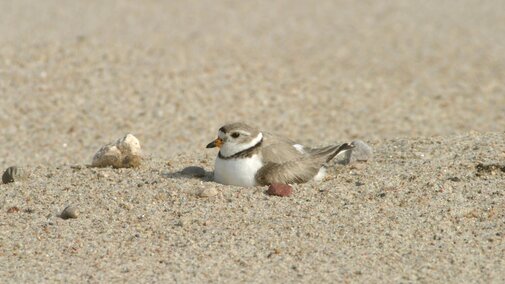Nests:
- Semi-colonial nesters
- Nests often found in Least Tern colonies
- Typically lay 4 eggs in a small cup-like depression on the ground
- Line nest with small pebbles
- Place eggs with the narrow ends pointing to the center of the nest
- May lay several clutches if nest is destroyed
- Only raise one brood per season
- Male and female incubate the eggs
Eggs:
- Well camouflaged
- A pale buff color usually with fine black markings
- sually uniform in size and coloration
- Take about 28 days to hatch
Chicks:
- Well camouflaged against sand and gravel
- Downy with white undersides, buff and grayish back and head with dark speckling, white collar around back of neck, pale orange legs, and black bill
- Precocial which means they are relatively mature and mobile, with down and eyes open from time of hatching
- Able to walk away from nest day of hatching
- Forage for themselves, eating aquatic insects in the sand but parental care is provided until about 21 to 28 days
- Able to fly at about 28 days
Defensive Behavior:
- Adults defend their nests and chicks using a broken wing display or “feigning”
- Adults will make alarm calls, limp, and pretend to be injured to lead the intruder away from nest and chicks
- Plovers nesting in Interior Least Tern colonies have the advantage of sharing defense with the more aggressive terns
- Chicks will either lay flat, hide under a plant or stick, or run and then hide from intruders depending on their age
Nest and Chick Predators:
- American Kestrels (Falco sparverius)
- Great Blue Herons (Ardea herodias)
- American Crows (Corvus brachyrhynchos)
- Owls
- Skunks, Raccoons
- Foxes, Coyotes
- Cats, Dogs
- Humans






















